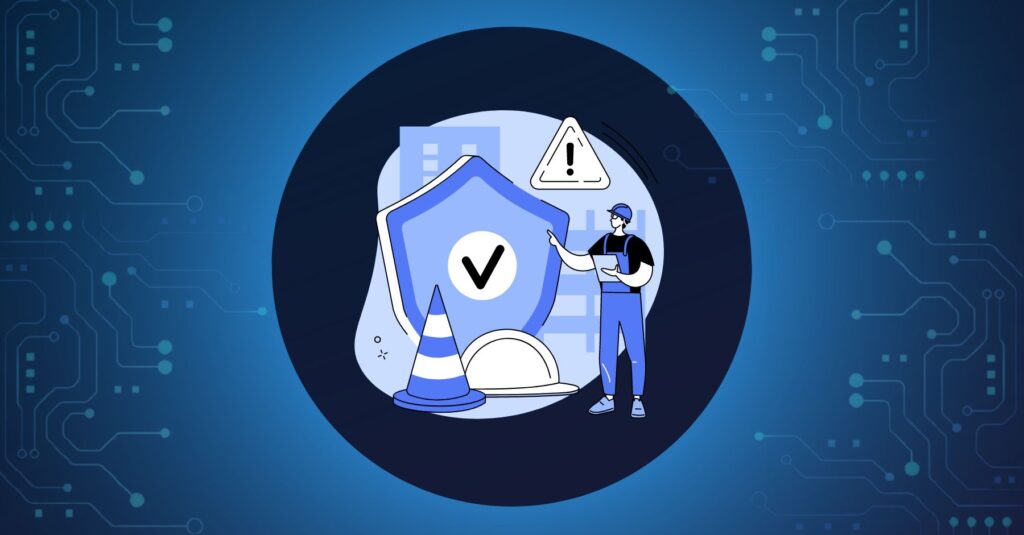Recent years have witnessed a rapid escalation in regulations and policies on environmental, social, and governance (ESG), and sustainability issues. Many companies are consequently under pressure to gather and leverage sustainability data (including climate data) in order to improve their disclosures and their risk management strategies. Climate risk assessments are among the required compliance exercises of many of these new regulations (including the SEC climate rule) and firms should seek to deepen their understanding of the climate risk assessment process in order to prepare.
Under the new U.S. SEC climate disclosure rule, companies are required to disclose the material risks posed by climate change to their business and their consolidated financial statements, including physical risks (such as sea level rise and extreme weather events) and transition risks (such as changes in regulations and market trends). Companies must also disclose the scenario analysis results (if utilized) that assess the potential impact of different climate scenarios on their business operations, strategy, financial condition, and outlook. This may involve extensive scenario analysis and calculating modeled average annual loss attributed to climate-related physical risks.
Step 1: Understanding Climate Risk and Determining Objectives
- The scope of a climate risk assessment should consider impacts on facilities & assets, products, resources, land use, customers, supply chain, employees, and the community.
- Review TCFD and other organizational guidance on the differences between the types of climate risk, including transition risks and physical risks
- Clearly outline what you aim to achieve, whether it’s reducing operational risks, complying with regulatory requirements, enhancing investor confidence, or improving overall resilience.
Step 2: Gathering Historical and Current data
To understand climate risk and its impact, organizations need access to historical data that demonstrates the effect of climate and weather on their business. They also need to analyze current local and global data as well as predictions and models of how the climate will change in the future.
- Gather intitial baseline data on your company and portfolio:
- Locations of offices, warehouses, manufacturing facilities, and supply chain participants
- Historical and projected physical hazard data for these locations (regional or local projections on temperature, precipitation, and sea level rise). Utilize sources such as the Intergovernmental Panel on Climate Change (IPCC), national meteorological agencies, and climate research institutions. (The U.S. Climate Resilience Toolkit is a resource).
- Business resiliency data, including a disaster recovery plan, alternate power arrangements, remote work capabilities, supplier bottlenecks, and alternate suppliers
- Community resiliency data that describes the readiness of the infrastructure to withstand climate hazards, including the airports, road connectivity, nearby hospitals, gas, electricity, supplies, and food services
- Current resource usage and performance data (i.e. water usage inventories)
- Any previously identified climate-related risks
- Data on past weather variability
- Rising insurance policies
- Changes in government policy or industry regulations
- Conduct a GHG inventory to determine the organization’s Scope 1, 2, and 3 emissions.
Step 3: Assess
*Be aware that many corporations choose to hire consultants, adaptation practitioners, or Architecture and Engineering (A&E) firms to assist them in compiling their vulnerability and risk assessments. A thorough climate risk assessment also involves a combination of technical analyses, data integration, and the use of specialized tools. Corporations should strongly consider using the vast array of available smart technology tools on the market to assist with assessments.
Identify how the assessment will be performed. There are several existing climate risk assessment archetypes and measurement methodologies to consider including:
- Screening assessments: Screening assessments, also called “desk-top” assessments, require the least amount of expertise and commitment. They are intended to give a top-level view of potential climate risks across the company and are often the first step before diving into one of the methods below.
- Risk Matrices: Develop a risk matrix to categorize risks based on impact and likelihood.
- Scenario Analysis: Various agencies, including the Intergovernmental Panel on Climate Change (IPCC), the International Energy Agency (IEA), and the Network for Greening the Financial System (NGFS) have developed scenarios that businesses can use to assess their climate risk or develop business-specific scenarios. Scenario analysis plays a key role in helping organizations better understand how climate factors could drive changes in the economy and financial system.
- Temperature score analysis: The Temperature Score is a metric that quantifies the baseline and future climate impact of a building and, as such, its potential long-term contribution to global warming. The temperature rating methodology is based on energy consumption and associated GHG emissions of the respective building on a 1.5°C pathway by 2050. The Temperature Score provides a measure to compare the climate impact of different buildings, allowing stakeholders in the real estate sector to make informed decisions regarding energy efficiency improvements and carbon reduction strategies.
- Stranding Risk Analysis: Uncovering Financially Unviable Assets. Asset stranding refers to the collapse of expected future profits from invested capital due to disruptive policy or technological changes. Stranding analysis is a key tool used to evaluate the risks associated with investments in assets that could become financially unsustainable before their expected lifespan ends. This analysis identifies factors that could lead to premature obsolescence or decreased value of properties, considering both physical and transitional risks. Physical risks include climate change-induced hazards such as extreme weather events that can directly damage infrastructure. Transitional risks involve changes in policies, legal frameworks, technological advancements, market dynamics, reputational concerns, and evolving energy efficiency standards. These transitions can make assets like buildings with low energy efficiency or outdated infrastructure less attractive as market preferences shift towards more sustainable and energy-efficient options.
Physical risk assessment
Organizations should examine their physical assets, suppliers, and customers and assess the effect of a weather-related disaster at their locations, which can help address questions such as:
- What risks does our organization need to prepare for?
- Which of our current and potential investment locations are at greatest risk from weather events?
- What mitigation strategies can we apply to reduce these risks, and which will be most effective?
- How can we incorporate long-term changes in climate conditions into our investment strategy
Transition risk assessment
Organizations should examine the impact on their business of carbon price (internally determined or government-mandated) as well as the impact of other noncarbon price-related government policies and regulations. Some examples of the country- and industry-specific noncarbon price policies include:
- Corporate average fuel policy
- Economy standards for passenger and commercial vehicles
- Regulations on methane emissions
- Phase-out of traditional coal-fired generation of electricity
In addition, organizations should determine the impact of:
- Market uncertainties and low-emission technology advancements on the valuation of certain assets, such as fossil fuel reserves, gas-powered vehicles, and agricultural land
- Demand for lower-emission products on the business’s operations and revenue, including any capital investments needed in technology development or research and development expenditure in new or alternative technology
- Changing consumer behavior or increased raw material cost as reflected in reduced demand for certain goods and services, shifts in energy and production costs, or change in revenue mix
More About WatchWire
WatchWire by Tango is a market-leading, energy and sustainability data management platform that uses cloud-based software to collect, automize, and analyze utility, energy, and sustainability data metrics. WatchWire streamlines, automates, and standardizes your sustainability reporting process by integrating directly and/or providing reporting exports to ENERGY STAR Portfolio Manager, LEED Arc, GRESB, CDP, SASB, GRI, and more. The platform provides customizable dashboards, which allow asset managers, sustainability managers, engineers, and more to monitor individual key performance indicators (KPIs) and create custom views for specific use cases.
To learn more about WatchWire and its capabilities, you can visit our website, blog, or resource library, request a demo, or follow us on LinkedIn, Instagram, or Twitter to keep up-to-date on the latest energy and sustainability insights, news, and resources.
 Top Sustainability Trends to Watch in 2025
Top Sustainability Trends to Watch in 2025

 Log In
Log In









